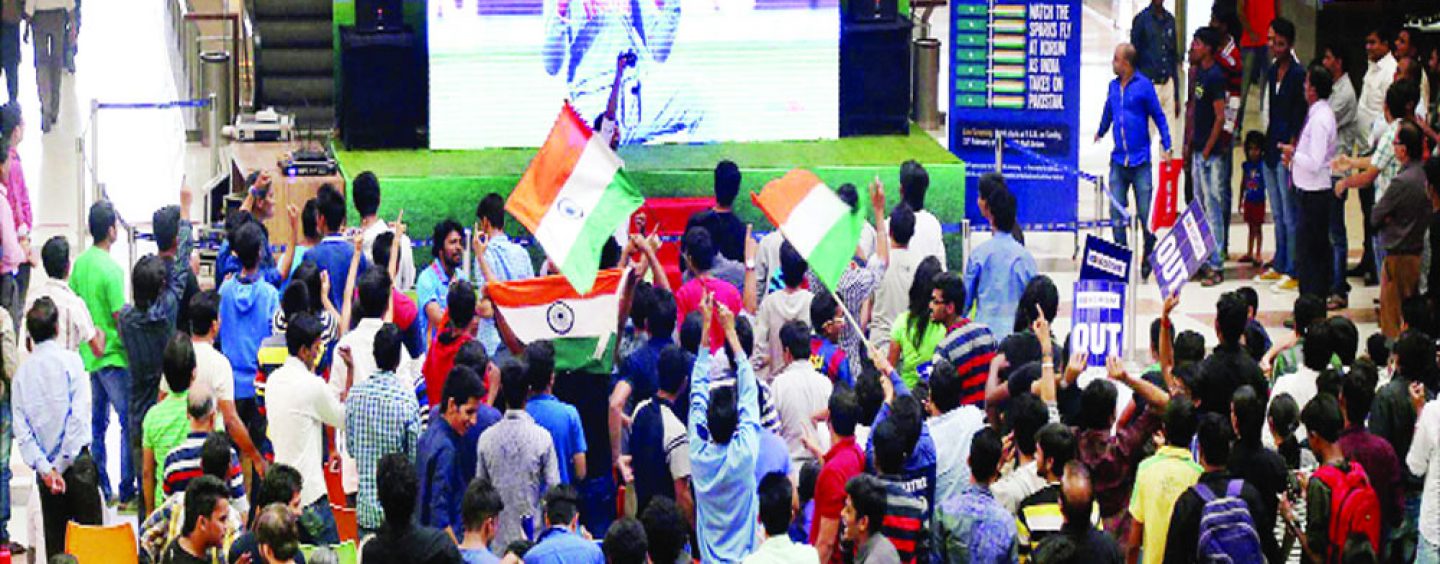Even as other sports disciplines gain popularity in India, the supremacy of cricket as a brand is expected to stay unchallenged. It has become a perfect combination of popularity, money, value-making and branding decisions
As underdogs of world cricket, Kapil Dev’s men had surprised the cricketing world and fans at home by registering a historic first victory in the 1983 World Cup. Such was the state of financial affairs of the Board of Control for Cricket in India (BCCI) back then that a ‘Lata Mangeshkar’ concert had to be organised to raise funds for the winning team. Each team member ended up receiving Rs 1 lakh. Ironically, BCCI’s hockey counterpart — the Indian Hockey Federation — was much richer at the time with the game and its players better entrenched in public imagination.
The year 1983 was the beginning of a turnaround nobody would have anticipated in that cricketing era of whites. As the victory at the Benson & Hedges Cup 1985 cemented Indian cricket’s position and underlined that 1983 was no fluke, the era laid the foundation of the emergence of Indian sports most powerful brand — cricket!
While 1983 made cricket catch Indian public’s attention, what later transformed the sport into the most dominating one in this country was a combination of factors, including corporate involvement, live streaming and an explosion of endorsement culture that brought big money into the sport. Make no mistake — India has had its fair share of sporting icons — from the iconic Major Dhyan Chand to the inimitable Viswanathan Anand to the inspirational Sania Mirza. Yet, none can match the dominance our cricketing icons enjoy.
1990s, The defining decade: The real shift in Indian cricket came in the 1990s. With the Indian economy being liberalised, greater access to television and improved quality of live coverage made the sport enter every Indian household. The 1990s also saw corporates and brands making a beeline to sponsor cricket events even as endorsements started pouring in for top cricketers. With India’s dismal Olympic performances accompanied by the decline of Indian hockey, Indians perhaps found the only team sport where the country was excelling globally.
The era also saw the emergence of influential sports management firms that started representing commercial interests of top athletes. In 2001, Sachin Tendulkar struck a dizzying Rs 100 crore deal with sports management firm WorldTel and became the face of uncountable brands and campaigns.
As big money poured in, not only did it change the fortunes of cricket players and the BCCI, but also gradually eclipsed all other sports in India.
Building of brand cricket: With the Indian subcontinent emerging as the new “Mecca” of world cricket, India became a cricketing superpower. The cash-rich BCCI now held the strings of world cricket, surpassing in power the hitherto highly influential Australian and English cricket boards. While cricket had become a brand to reckon with, infusing value in this brand to make it bigger became the motto of the BCCI.
In 2008, the BCCI laid the foundation for Indian cricket’s biggest money-spinner in Indian Premier League (IPL) in response to the private endeavour Indian Cricket League (ICL) that threatened its supremacy. With the involvement of India’s and the world’s biggest cricketing superstars, IPL grew stupendously to become the most sought after cricketing event in the world.
When the Indian cricket team clinched its second World Cup victory in front of the home crowd at Mumbai’s Wankhede stadium, India had come a full circle from its 1983 victory — from the minnows to the giants of world cricket!
In recent years, things have improved for athletes playing sports other than cricket with cash prizes going up and brand endorsements starting to flow in for non-cricketing sports icons such as PV Sindhu, Saina Nehwal and Mary Kom. As Indian shuttlers, wrestlers, boxers and shooters make Indian proud on the world stage, Indians are starting to look at new sporting icons. The emergence of a series of sports leagues in hockey, football and kabaddi among others has further contributed to the shifting focus. Yet, our cricketing icons continue to enjoy unparalleled brand value.
The fourth edition of India’s Most Powerful Celebrity Brands report by Duff & Phelps recently put Virat Kohli’s estimated brand worth at a mammoth $170 million. PV Sindhu, the most valued shuttler brand, was placed at a distant $21.6 million. Indian cricket’s is a story of the coming together of a perfect combination of popularity, money, value- making and branding decisions. Even as several sports gain popularity in India, the supremacy of cricket as a brand is expected to stay unchallenged.
(The writer is director and creative strategist of an advertising and consulting agency)
Writer: Kewal Kapoor








 OpinionExpress.In
OpinionExpress.In















Comments (0)